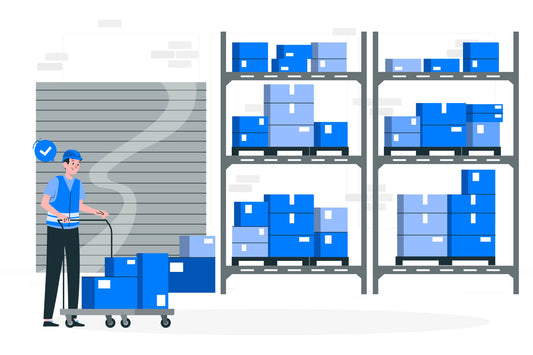
Understanding the EPR Stakeholder Ecosystem: A Comprehensive Whitepaper
November 03, 2025 Isaak SiebengaTable of Contents
Why EPR Stakeholder Collaboration Matters in 2025
Extended Producer Responsibility (EPR) is changing how companies should think about products. Not just how they’re made and sold, but what happens after use. Across waste categories like packaging, electronics, and other goods. But as legislation expands, so does the complexity: every country has its own rules, EPR reporting systems, and definitions. This grows a complex web of EPR stakeholders. This EPR stakeholders whitepaper sets out to explore this growing web of obligations, and the mounting pressure it creates for producers, agencies, PROS, and policymakers alike. This EPR stakeholders whitepaper unpacks the individual roles of the stakeholders in driving EPR forward and how this affects your responsibilities as EPR manager. Sign up at the bottom of the page to receive the paper instantly.
The EPR Compliance Challenge: Complexity and Administrative Burden
The landscape of EPR is growing ever more complex, and with that, the burden on producers, agencies, and governments is growing as well. Across the EU, regulations differ not just from country to country but from product stream to product stream, creating inconsistent registration, reporting and enforcement requirements. Producers may need to register multiple times, report in differing formats, pay distinct fees for each scheme, and monitor changing rules in dozens of jurisdictions.
One recent study done by Eunomia for Ecommerce Europe found some companies dedicating up to 4,000 staff-hours per year just to comply with EPR obligations, the equivalent of 500 work-days. This results in administrative overload, stretched resources for agencies and companies, slowdowns in compliance, and a growing risk that obligations slip through the cracks.
Who Are the Key EPR Stakeholders?
The ecosystem of EPR stakeholders explained in this whitepaper is a delicate web of interconnected actors each with their own pressures, goals, and constraints.
- Producers, like ecommerce, manufacturers and importers, face the daily reality of navigating compliance across multiple countries. This is often with limited resources and rising costs tied to packaging or other obligations.
- Governments are working to improve waste collection and processing, and strengthen enforcement. However, differing national interpretations make that an uphill battle.
- Agencies and consultants serve as the vital bridge between regulatory complexity and practical implementation, helping producers translate requirements into action.
- Producer Responsibility Organizations (PROs) handle the operational side from fee collection and eco-modulation to recycling targets and data reporting.
Yet despite their shared objectives, no single group can resolve EPR’s challenges in isolation. Progress depends on collaboration, transparency, and a shared effort to streamline how responsibility is managed across the entire system.
Insights from the Field: What the EPR Whitepaper Reveal
This EPR stakeholders whitepaper brings together perspectives from every corner of the EPR ecosystem, producers, agencies, governments, and PROs, to map their goals and challenges. The EPR whitepaper offers a 360-degree view of EPR in practice and a starting point for building a more coordinated, efficient process with EPR software.
How This EPR Whitepaper Can Help Your Organization
Understanding the dynamics behind EPR compliance is about finding your position in a rapidly changing system. By exploring these insights, you can identify where your organization fits within the broader EPR landscape and pinpoint opportunities to streamline your own processes.
Whether you’re managing compliance internally, advising clients, or shaping policy, the findings highlight concrete ways to reduce administrative burden, improve data quality, and strengthen collaboration across the value chain. The message is clear: EPR success depends on innovation and collaboration. Those who act now by embracing smarter tools and shared standards will be best equipped to stay compliant, efficient, and ahead of regulatory change.
Download the Complete EPR Stakeholder Whitepaper
The EPR stakeholders ecosystem is evolving fast, and the full story is bigger than any single article can tell. Our EPR whitepaper offers an in-depth exploration of how producers, agencies, governments, and PROs are navigating today’s challenges, backed by data, real-world examples, and expert recommendations. Sign up for the EPR whitepaper below the FAQ to explore the complete insights, detailed graphics, and actionable steps toward a more connected, efficient approach to EPR compliance across Europe.
FAQ
-
Why is EPR important right now?
-
What makes EPR compliance so complex?
-
Who are the main EPR stakeholders in the ecosystem?
-
Why can't a single EPR stakeholder solve challenges alone?
-
What new insights does the EPR whitepaper provide?
-
How does EPR affect my organization?
-
Where can I learn more?



